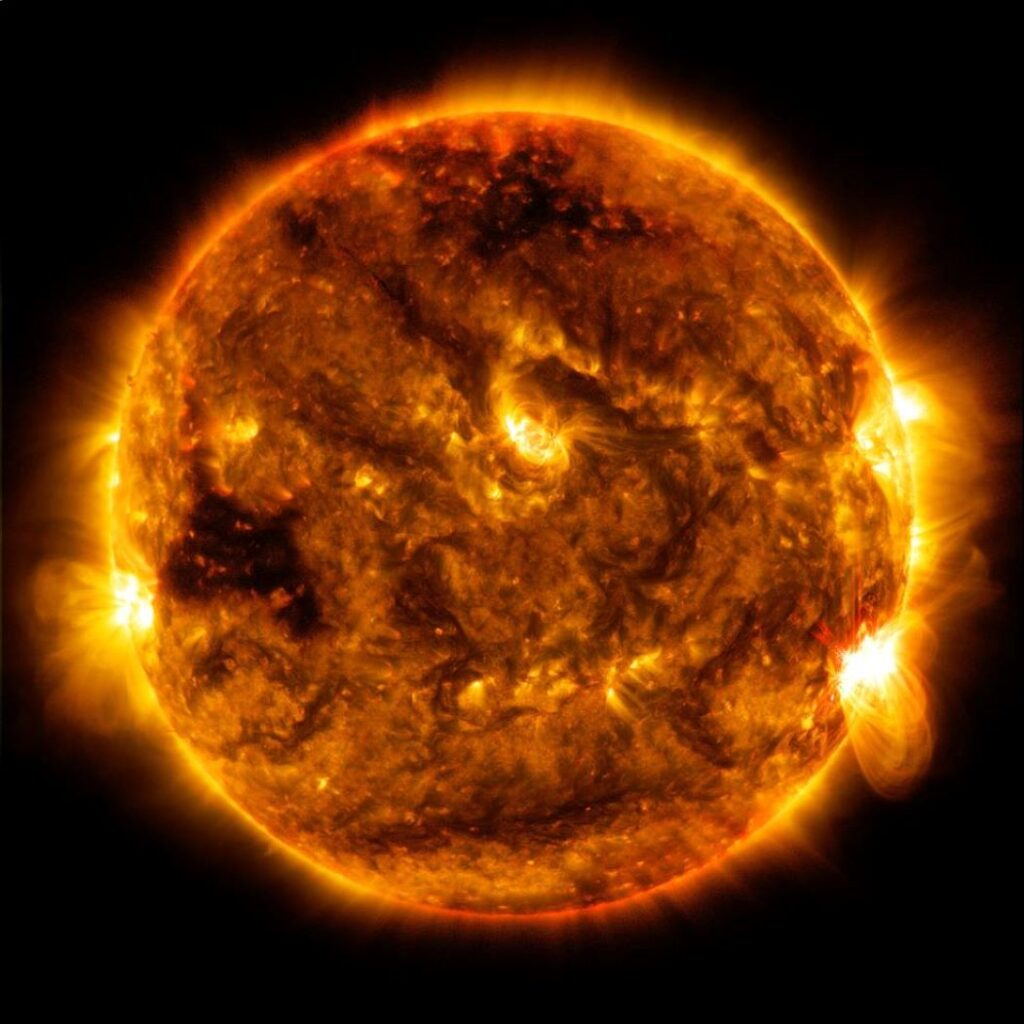US space agency NASA has announced two new science missions to help improve its understanding of space weather and the Earth-Sun environment.
The Multi-slit Solar Explorer (MUSE) and HelioSwarm missions will provide deeper insights into the Sun-Earth connection and constantly changing space environment, while providing critical information to help protect astronauts, satellites and communications signals such as GPS.
Thomas Zurbuchen, associate administrator for science at NASA Headquarters in Washington, said, “MUSE and HelioSwarm will provide new and deeper insight into the solar atmosphere and space weather. These missions not only extend the science of our other heliophysics missions — they also provide a unique perspective and a novel approach to understanding the mysteries of our star.”
The MUSE mission will help scientists understand the forces driving the heating of the Sun’s corona and the eruptions in that outermost region that are at the foundation of space weather. The mission will offer deeper insight into the physics of the solar atmosphere by using a powerful instrument known as a multi-slit spectrometer to observe the Sun’s extreme ultraviolet radiation and obtain the highest resolution images ever captured of the solar transition region and the corona.
The mission will also provide complementary observations from heliophysics research such as the Extreme UltraViolet Spectroscopic Telescope and ground-based observatories.
Nicola Fox, director of the heliophysics division at NASA Headquarters, said, “MUSE will help us fill crucial gaps in knowledge pertaining to the Sun-Earth connection. It will provide more insight into space weather and complements a host of other missions within the heliophysics mission fleet.”
The primary goal of the MUSE mission is to investigate the causes of coronal heating and instability, such as flares and coronal mass ejections, and gain insight into the basic plasma properties of the corona. MUSE will obtain high-resolution images of the evolution of solar flare ribbons in a field of view focused on a large, active region on the Sun.
The principal investigator for the MUSE mission is Bart DePontieu of the Lockheed Martin Advanced Technology Center (LMATC) of Palo Alto, California. This mission has a budget of US$192m. LMATC will provide project management.
HelioSwarm
The HelioSwarm mission is a constellation or “swarm” of nine spacecraft that will capture the first multiscale in-space measurements of fluctuations in the magnetic field and motions of the solar wind known as solar wind turbulence. The Sun’s outermost atmospheric layer, the heliosphere, encompasses a large region of the solar system. Solar winds spread through the heliosphere, and their interactions with planetary magnetospheres and disruptions such as coronal mass ejections affect their turbulence.
Studying solar wind turbulence across large areas requires plasma measurements taken simultaneously from different points in space. HelioSwarm consists of one hub spacecraft and eight co-orbiting small satellites that range in distance from each other and the hub spacecraft. The hub spacecraft will maintain radio contact with each small satellite. All radio contact between the swarm and Earth will be conducted through the hub spacecraft and the NASA Deep Space Network of spacecraft communication antennas.
Peg Luce, deputy director of the NASA’s heliophysics division, said, “The technical innovation of HelioSwarm’s small satellites operating together as a constellation provides the unique ability to investigate turbulence and its evolution in the solar wind.”
The HelioSwarm mission’s principal investigator is Harlan Spence from the University of New Hampshire. The mission’s budget is US$250m. NASA’s Ames Research Center will provide project management.
Funding and management oversight for these missions is provided by the Heliophysics Explorers Program, managed by the Explorers Program Office at NASA’s Goddard Space Flight Center in Greenbelt, Maryland.



